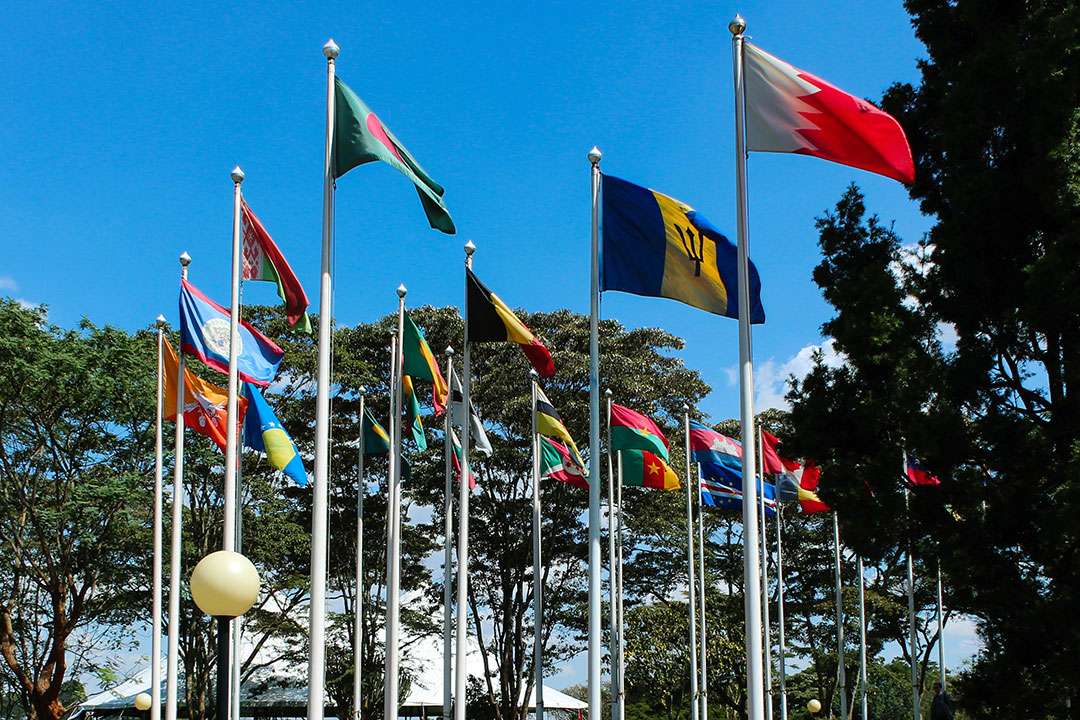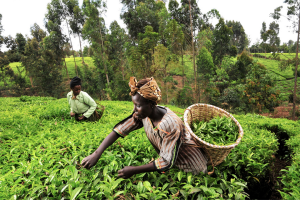31 May 2018: During the month of May, bankers continued discussions on climate-related financial disclosures to transform the way markets respond to climate change. Development practitioners implemented policy-oriented adaptation strategies with projects aimed at increasing climate resilience. They also reviewed lessons learned, progress made and further needs, in particular for the African Region.
Enhancing Investment Decisions in the Face of Climate Change Uncertainties
Investors and companies are increasingly concerned over the physical impacts of climate change on the economy and financial markets. To make informed decisions, they need to assess, price and manage climate-related risks, including by measuring and evaluating their own risks and those of their suppliers and competitors. As reported in our previous updates, the Task Force on Climate-related Financial Disclosures (TCFD) recommends the inclusion of metrics on physical climate risks and opportunities into financial disclosures. A common taxonomy on climate change adaptation and metrics for such disclosures was advocated by the EU’s High-Level Expert Group on Sustainable Finance (HLEG) in January 2018.
The EBRD recommends companies to perform forward-looking risk assessments and disclose material exposure to climate hazards.
In May 2018, the European Bank for Reconstruction and Development (EBRD) and the Global Centre of Excellence on Climate Adaptation (GCECA) organized a conference on physical climate risks and opportunities at EBRD’s headquarters in London, UK. Discussions focused on experiences and opportunities associated with managing these risks and on how to include them in financial disclosures.
The Bank released its recommendations for companies in a report titled, ‘Advancing TCFD Guidance on Physical Climate Risks and Opportunities.’ In it, the EBRD recommends companies to perform forward-looking risk assessments and disclose material exposure to climate hazards such as floods, water stress, extreme heat, storms and sea level rise. It also advises firms to investigate benefits from investing in resilience and opportunities to provide new products and services in response to market shifts. Other recommendations include the use of scenario analysis and incorporation of long-term climate uncertainties into business planning and strategic decisions. [Advancing TCFD Guidance on Physical Climate Risks and Opportunities] [GCECA Press Release] [SDG Knowledge Hub Story on TCFD Recommendations]
Report Urges Insurance Sector to Align Investment Strategies with Paris Agreement Goals
An analysis of the global insurance industry by the Asset Owners Disclosure Project (AODP), which ranks the world’s largest institutional investors and assesses their response to climate-related risks and opportunities, identified the lack of common metrics and targets as a gap in the implementation of the TCFD recommendations on climate strategy, climate risk management and targets. In the report titled, ‘Got It Covered? Insurance in a Changing Climate,’ the AODP calls on insurers to bridge this gap and step up low-carbon investments. Its findings show that the use of climate scenario analysis is still in its infancy and that less than a third of the largest insurers have measured their portfolio emissions.
The report highlights the need for regulators to strengthen regulatory frameworks and mandatory requirements for climate-related disclosure. Identifying the US as the home to most “laggards” in the industry, they suggest that investors prioritize engaging with the US insurance sector to promote better disclosure and management of climate-related risks and opportunities. [UNFCCC News Story]
GFDRR Identifies Strategies for Vulnerability Mapping and Integrating Risk Management in Development Programmes
On risk modeling and analysis of natural disasters to inform integration of risk management in development programmes, the Global Facility for Disaster Reduction and Recovery (GFDRR) published a report titled, ‘Aftershocks: Remodeling the Past for a Resilient Future.’ The GFDRR is a global partnership that helps developing countries better understand and reduce their vulnerabilities to natural hazards and adapt to climate change.
The report looks at the potential impact of disasters on a range of sectors such as agriculture and infrastructure, including the vulnerability of digital and electronic infrastructures. Governments can use the findings of the report to identify strategies and investment priorities around early warning systems, resilient urban planning and financial protection. [Aftershocks: Remodeling the Past for a Resilient Future] [World Bank Press Release]
World Bank, NDF Support Climate Resilience, Infrastructure Projects in Africa
In May 2018, the World Bank approved a US$75 million International Development Association (IDA) credit to improve urban drainage, selected public services and climate resilience for the urban poor of Greater Antananarivo, Madagascar. The Bank also approved a $150 million grant in support of Mozambique’s efforts to enhance road access in rural poor areas with low agricultural productivity exacerbated by climate shocks. [World Bank Press Release on Madagascar Project] [World Bank Press Release on Mozambique Project]
The Nordic Development Fund (NDF) supported a four-year initiative to improve Zambia’s road infrastructure. The project aims to deliver adaptation and mitigation recommendations for road design, construction and maintenance in the form of revised guidelines, codes and standards to enhance national resilience and adaptation to climate change. [NDF Press Release on Zambia Project]
AfDB Annual Meetings Call for More Effective Management of Public Finances
During the Annual Meetings of the African Development Bank (AfDB), which took place from 21-25 May in Busan, Republic of Korea, the Board of Governors authorized consultations on a general increase in the Bank’s capital, and commended its record performance in 2017, with recorded approvals of US$8.7 billion and over $7 billion of disbursements. The 2018 Annual Development Effectiveness Review released during the meeting shows that the Bank is delivering on its goals and making good progress towards achieving its development and operational targets.
According to the Communiqué released at the conclusion of the meetings, discussions centered around the need to link the search for external financing with mobilization of internal resources, notably through more effective management of public finances and efforts to combat illicit financial flows out of the African continent. [AfDB Press Release on Annual Meetings] [AfDB Annual Meetings Communiqué]
Partnerships Launched to Enhance Green Growth and Sustainable Development in Africa
On the sidelines of its Annual Meetings, the AfDB signed a Memorandum of Understanding (MoU) with the Global Green Growth Institute (GGGI) to accelerate green growth options for African countries and to strengthen climate resilience in Africa. In it, the AfDB and GGGI agree to coordinate their activities on the implementation of the SDGs and countries’ Nationally Determined Contributions (NDCs) under the Paris Agreement on climate change, such as programmes on clean energy, sustainable landscapes, green cities, and water and sanitation. The partnership also reinforces the work of the AfDB-hosted Africa NDC Hub on accelerating climate action to transition Africa towards a low-carbon and climate-resilient development pathway.
During the biennial Korea-Africa Economic Cooperation (KOAFEC) Conference, which coincided with the AfDB’s Annual Meetings, the Republic of Korea announced a US$5 billion financial assistance package for Africa. Resources from various Korean bilateral agencies and platforms will be delivered over two years through partnerships with various development agencies. [AfDB Press Release on Partnership with GGGI] [AfDB Press Release on Republic of Korea Financial Package]
Lessons Learned From Climate Resilience Program
The World Bank and the Climate Investment Funds (CIF) published insights from multiple case studies on CIF financing and the World Bank’s Pilot Program for Climate Resilience. The top ten lessons from design and early implementation stages of the Program, which have enhanced uptake of climate resilience in pilot countries, highlight the value for success of several activities. Besides monitoring and reporting, these include high-level coordination across multiple sectors, assessing vulnerability to climate risks and hazards, linking and leveraging investments, transformational investments and policy reforms, and stakeholder engagement, as well as responsive country-based approaches and nurturing ownership in regional programmes. [Key Lessons from Pilot Program for Climate Resilience: Shaping Climate Resilience for Transformational Change]
* * *
The SDG Knowledge Hub publishes monthly climate finance updates, which largely focus on multilateral financing and cover, inter alia, mitigation and adaptation project financing news and lessons, institutional events and news, and latest developments in carbon markets and pricing. Past IISD climate finance updates can be found under the tags: Finance Update: Climate Change; and Finance Update: Sustainable Energy.
SDGs
Issues
- Agriculture & Food Security,
- Adaptation,
- Desertification & Land Degradation,
- Follow-Up and Review,
- Mitigation,
- International Negotiations,
- Climate Change,
- Disasters & Humanitarian Relief,
- Economics & Investment,
- Renewables,
- Energy,
- Governance,
- Human Settlements & Population,
- Industrial Development,
- Land,
- Monitoring & Evaluation,
- Poverty Eradication,
- Sustainable Development,
- Stakeholder Participation,
- Transport,
- Water & Sanitation

